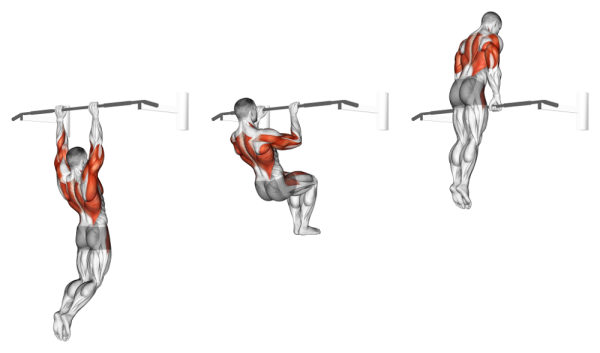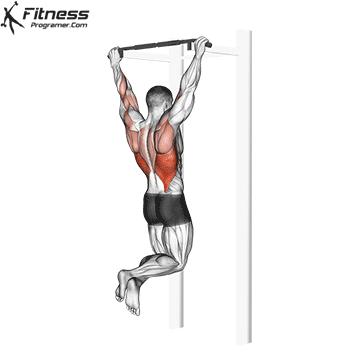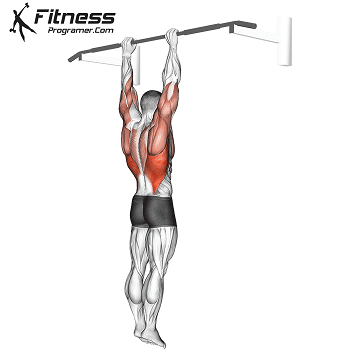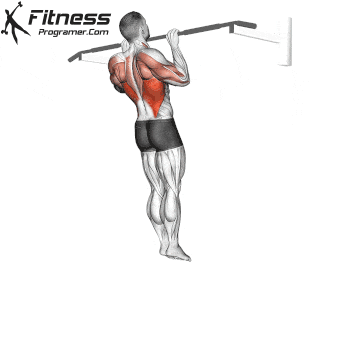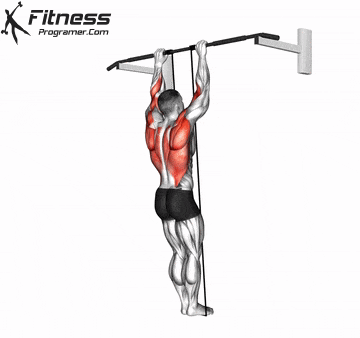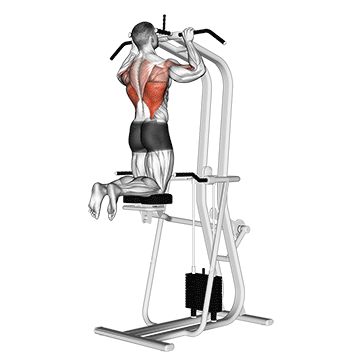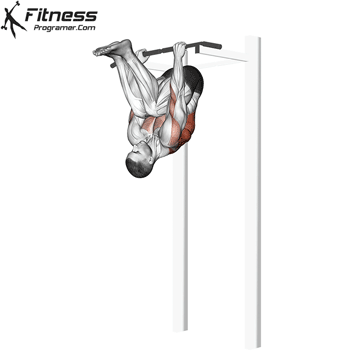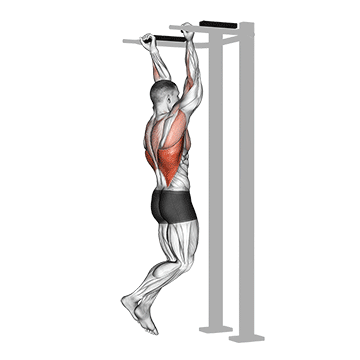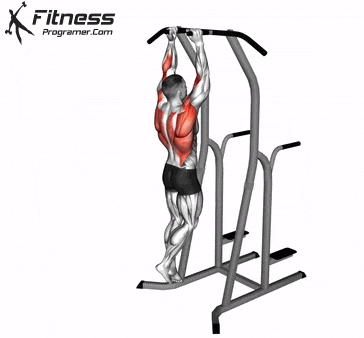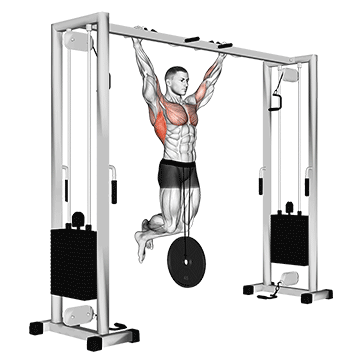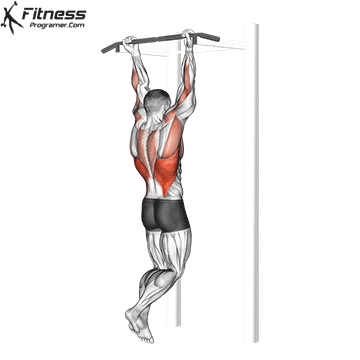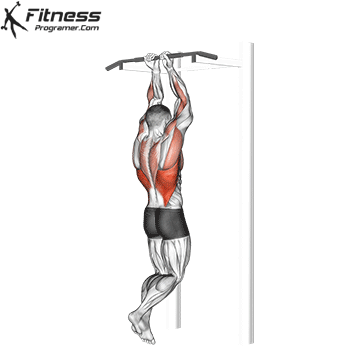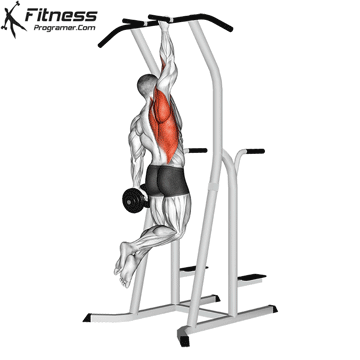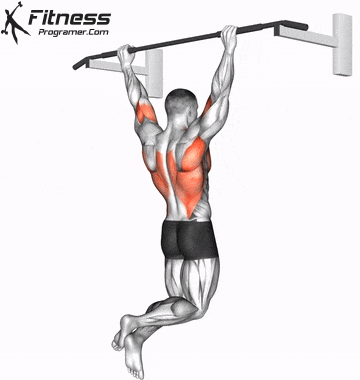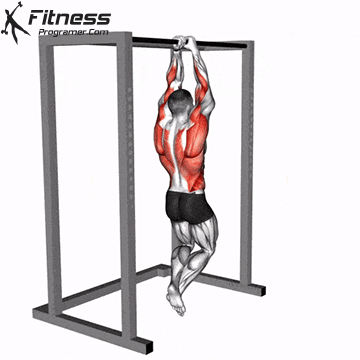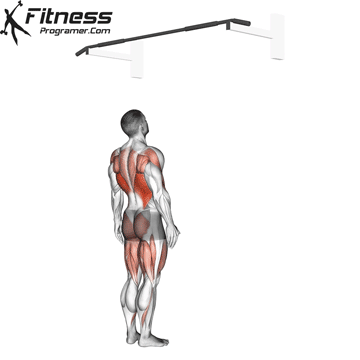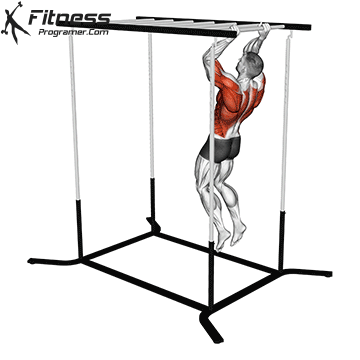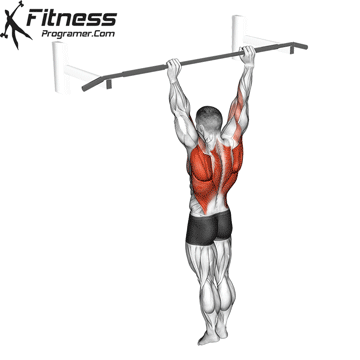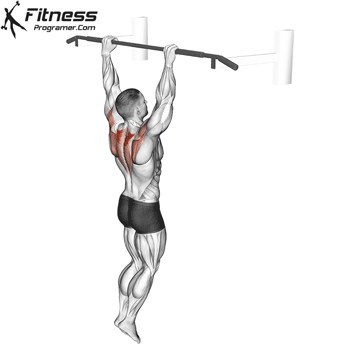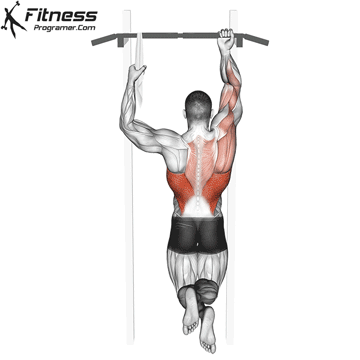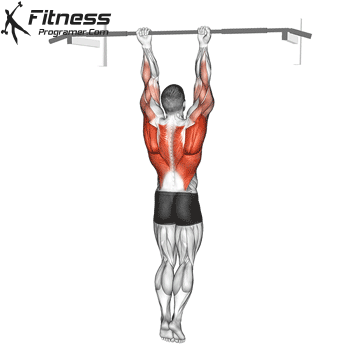Muscle-Up
The muscle-up is a compound exercise that combines a pull-up with a dip to create a full-body movement that requires strength, technique, and coordination. Muscle-ups can be done on a bar or rings. It is a popular exercise among athletes and fitness enthusiasts because of its high level of difficulty and the wide variety of muscle groups it works. They are commonly seen in calisthenics and gymnastics training, as well as in functional fitness workouts like CrossFit.
How to do Muscle-up:
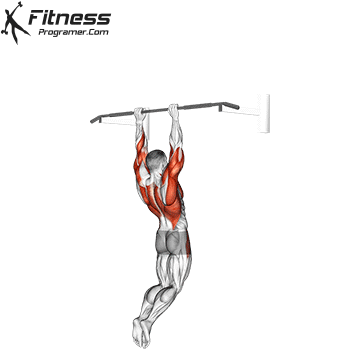 Here are the general steps to perform a muscle-up:
Here are the general steps to perform a muscle-up:
- Start by hanging from the bar with your arms fully extended, palms facing away from your body. Your grip should be slightly wider than shoulder-width apart.
- Begin with a powerful pull-up, using your back muscles and arms to pull your body up towards the bar. Use a false grip (wrists turned over the bar) to help with the transition phase.
- Once your chest reaches the height of the bar, begin to rotate your wrists forward and drive your elbows down towards your hips. This will allow you to transition your body over the bar.
- As you transition, keep your core tight and engage your triceps to push yourself up into the dip position. Focus on explosive power in your pull-up and the transition phase of the muscle-up.
- In the dip position, your arms should be fully extended with your shoulders locked out, and your body should be in a hollow position with your feet slightly in front of you. Keep your core tight throughout the movement to help maintain control and stability.
- Lower yourself down from the dip position, reversing the movement back to the starting position.
Muscle-Up: Tips and Techniques
Here’s a comprehensive guide to mastering the muscle-up with tips and techniques to help you along the way:
- Build a Strong Foundation: Before attempting the muscle-up, you need to have a strong foundation of upper body strength. Focus on developing your pull-ups and dips by doing sets of these exercises with proper form. This will help you build the strength and control needed for the muscle-up.
- Work on Your Grip Strength: A strong grip is essential for the muscle-up. Incorporate exercises that improve your grip strength, such as hanging from a bar for as long as possible or doing farmer’s carries with heavy weights.
- Perfect Your Form: Proper form is crucial for performing a successful muscle-up. Make sure to engage your core, keep your elbows close to your body, and maintain a tight grip on the bar or rings. Practice the movement slowly and with control until you feel confident with the technique.
- Train Consistently: Consistency is key when it comes to mastering the muscle-up. Incorporate it into your regular training routine and practice the movement several times a week. You can also use other exercises, such as ring dips or pull-ups, to help build the strength needed for the muscle-up.
- Increase Your Explosiveness: The muscle-up requires explosive power to pull yourself up and over the bar. Incorporate explosive exercises, such as plyometric push-ups or box jumps, into your training routine to improve your explosive power.
- Visualize Success: Visualization can be a powerful tool in mastering the muscle-up. Visualize yourself performing the movement with perfect form and feeling confident and strong. This can help you build the mental strength needed to overcome any doubts or fears.
- Be Patient: Mastering the muscle-up takes time and patience. Don’t get discouraged if you don’t get it right away. Keep practicing, and eventually, you’ll be able to perform this impressive exercise with ease. By following these tips and techniques, you can master the muscle-up and achieve a new level of strength and athleticism.
Muscle-up Benefits
Muscle-ups are a challenging exercise that offer a wide range of benefits for the body. Here are some of the benefits of muscle-ups:
Builds upper body strength: Muscle-ups are a compound exercise that work multiple upper body muscle groups, including the back, shoulders, chest, and triceps. Performing muscle-ups regularly can help build strength and increase muscle mass in these areas.
Enhances coordination and control: Performing a muscle-up requires a high level of coordination and control. The movement involves a smooth transition from a pull-up to a dip, which requires precise timing and technique. Practicing muscle-ups can help improve your overall coordination and body control.
Improves core stability: Maintaining a tight core throughout the movement is crucial for performing a muscle-up. This can help improve core stability and strength, which can translate to better performance in other exercises and activities.
Increases cardiovascular endurance: Performing multiple muscle-ups in a row requires a high level of cardiovascular endurance. Incorporating muscle-ups into your training routine can help improve your cardiovascular fitness and stamina.
Boosts functional fitness: Muscle-ups are a popular exercise in functional fitness training programs like CrossFit. Performing muscle-ups can help improve your overall functional fitness, which can translate to better performance in everyday activities and sports.
Provides a challenge: Mastering the muscle-up takes time and practice, and can provide a satisfying challenge for those looking to push their limits and improve their fitness. Overall, muscle-ups are a challenging exercise that offer a wide range of benefits for the body. Incorporating muscle-ups into your training routine can help improve your strength, coordination, endurance, and overall fitness.
Muscle-up muscle groups worked
Extension, adduction, and transverse abduction of the shoulder
- Latissimus dorsi
- Deltoid (posterior)
- Pectoralis major
- Infraspinatus
- Teres major
- Teres minor
- Triceps brachii (long head)
- Coracobrachialis
Adduction and inferior rotation of the scapula
- Trapezius (lower and middle fibers)
- Rhomboids
- Levator scapulae
- Pectoralis minor
Flexion of the elbow
- Biceps brachii
- Brachioradialis
- Brachialis
Dip Phase
- Anterior Deltoid
- Pectoralis Major
- Triceps Brachii
Isometric anti-extension and anti-rotation of the spine
- Rectus abdominis
- External oblique
- Internal oblique

